Tumbler
Can Tumblers Be Recycled?
Can Tumblers Be Recycled? A Practical Guide for Eco-Conscious Consumers
Introduction: Why Tumbler Recycling Matters
In today’s sustainability-focused world, reusable tumblers have become part of everyday life — from morning coffee runs to staying hydrated throughout the day. They’re popular, stylish, and a great step toward reducing single-use plastic. But what happens when a tumbler gets damaged, lost its lid, or is simply no longer needed? Can tumblers be recycled?
Understanding how to dispose of your tumbler responsibly is more important than ever. With landfills overflowing and recycling systems under strain, eco-conscious consumers are asking smart questions — and recycling your tumbler the right way is a small but impactful step toward a greener planet.
Can Tumblers Be Recycled? It Depends on the Material
The short answer is: yes, some tumblers can be recycled — but it depends heavily on what they’re made of. Tumblers come in various materials like plastic, stainless steel, glass, and even insulated versions made from a mix of components. Each material presents a different recycling scenario, and not all recycling facilities accept them in the same way.
Let’s break it down.
Common Types of Tumblers and Their Recyclability
Plastic Tumblers
Plastic tumblers are lightweight and affordable, but their recyclability hinges on the type of plastic used. Most tumblers will have a recycling symbol at the bottom with a number inside:
– #1 PET (Polyethylene Terephthalate): Often recyclable curbside, especially in bottles, but less so in thicker items like tumblers.
– #5 PP (Polypropylene): Common in reusable tumblers; many facilities now accept #5 plastics, but check with your local recycler first.
⚠️ Tumbler recycling tips for plastic: Make sure the tumbler is clean and free from food or drink residue. Remove any non-plastic parts like rubber seals or metal straws.
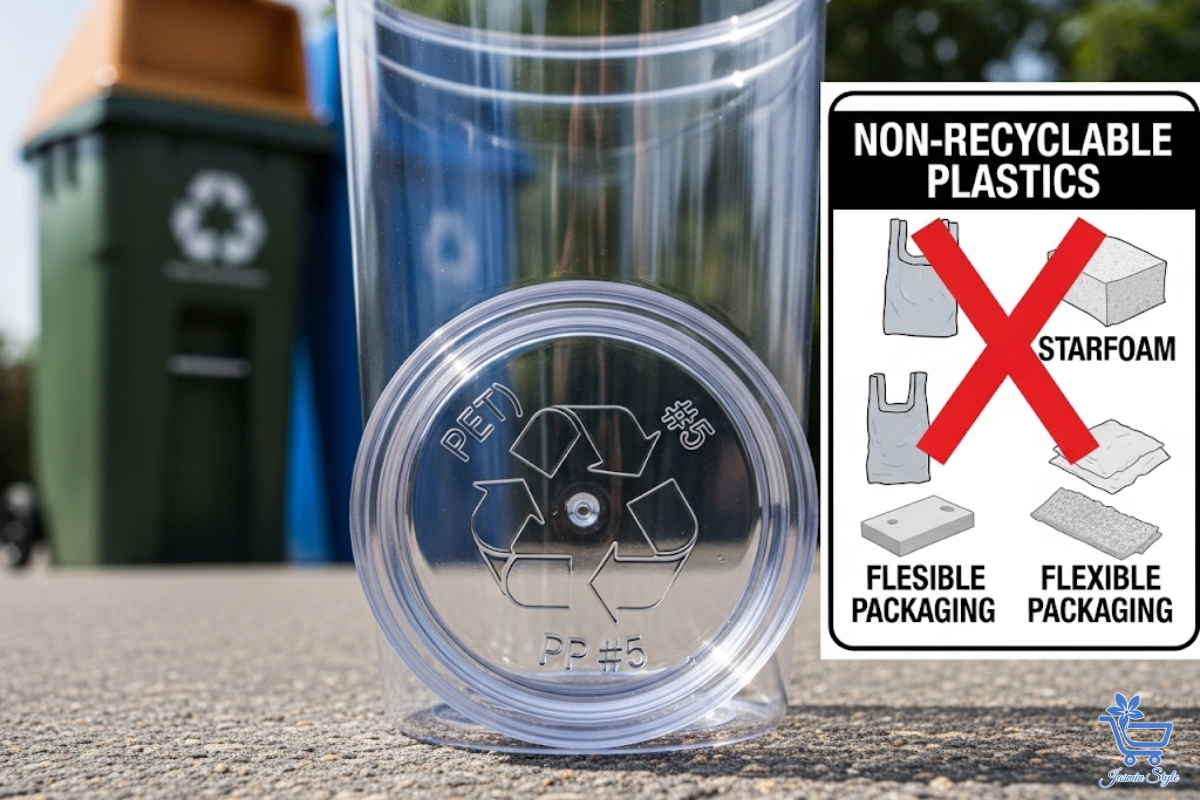
Want to learn more about how materials affect your product choices? Check out our guide on what fabric Hawaiian shirts are made of — it’s surprisingly similar in concept.
Stainless Steel Tumblers
Are stainless steel tumblers recyclable? Absolutely. Stainless steel is one of the most recyclable materials available. While you can’t just toss it in your curbside bin, you can bring it to a local scrap metal facility. These centers will melt the steel down and reuse it in construction, tools, or even new drinkware.
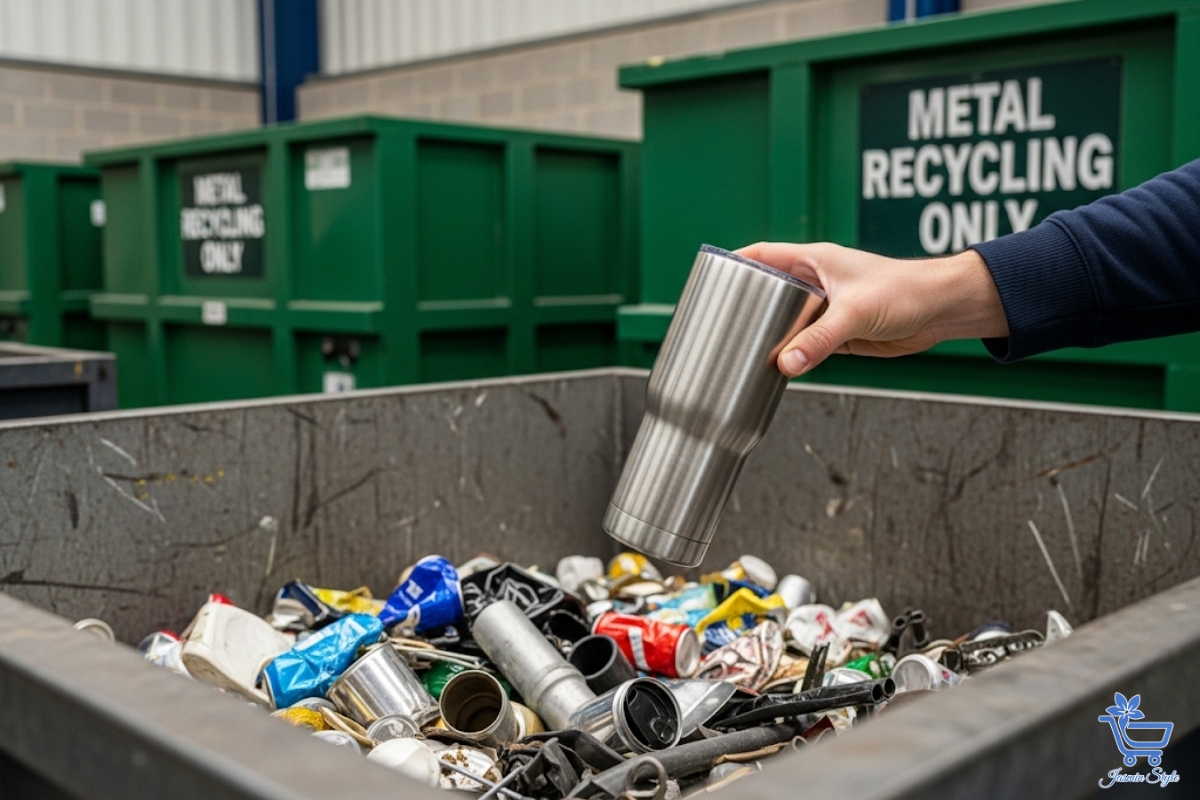
💡 Bonus: Stainless steel tumblers are durable, BPA-free, and often last for years — making them a great eco-friendly investment even before they reach the recycling stage.
Glass Tumblers
Glass tumblers are usually recyclable through curbside programs, but there are a few things to keep in mind:
– Remove plastic lids, silicone sleeves, or metal bands
– Only recycle unbroken glass — shattered pieces are hazardous and often not accepted
Glass is infinitely recyclable, but mixed materials can complicate the process.
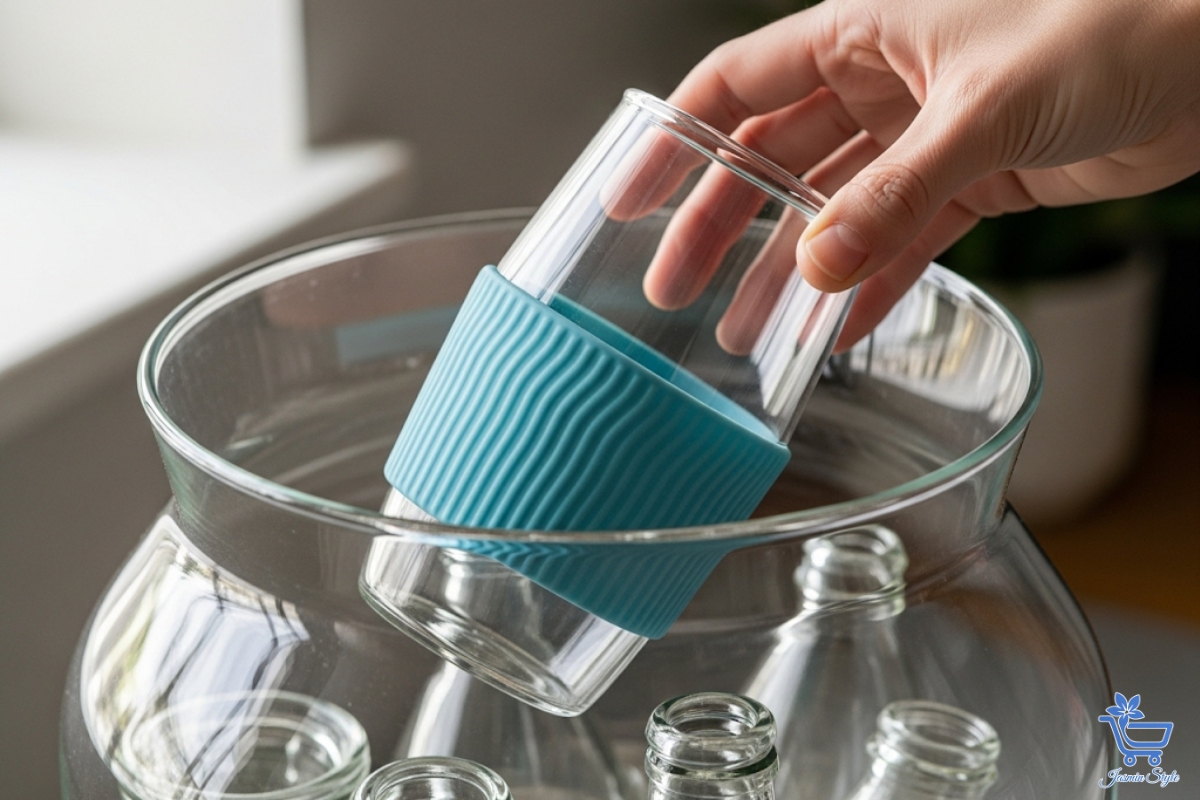
Insulated or Mixed-Material Tumblers
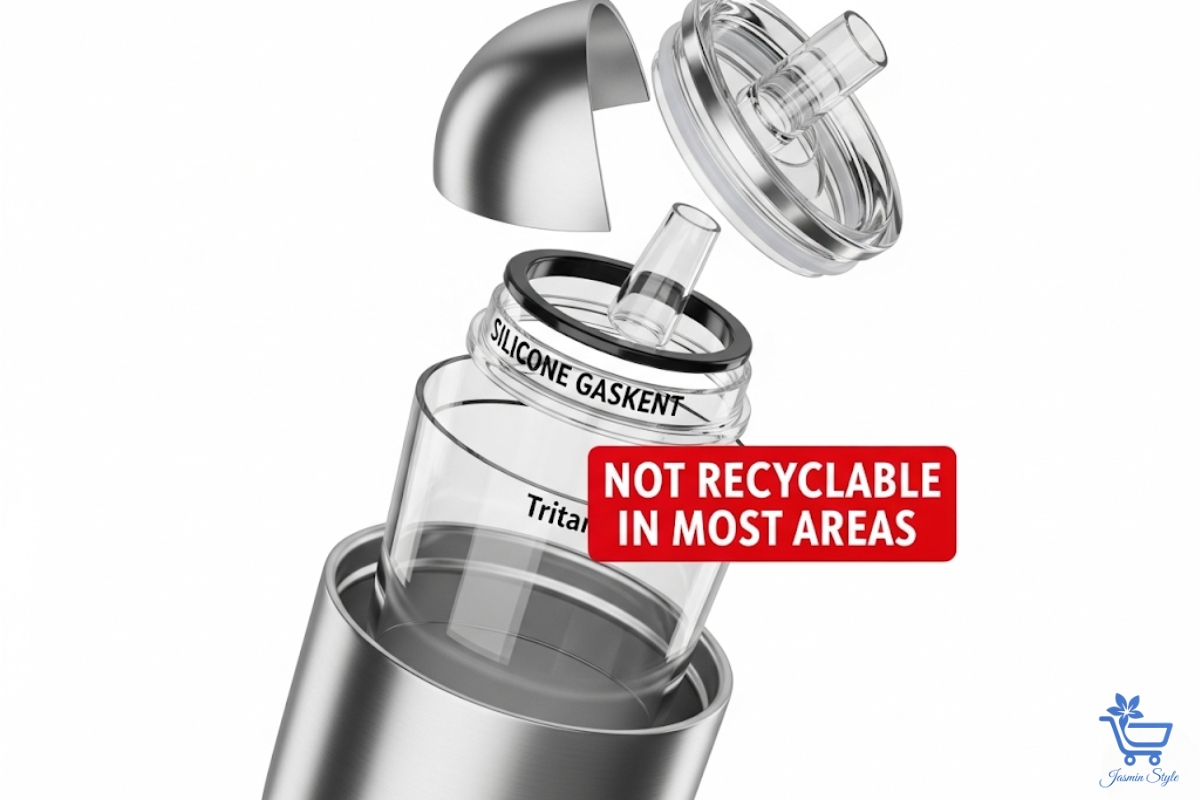
These tumblers are built for performance — think double-wall insulation, vacuum-sealed steel, or plastic outer layers — but they’re the hardest to recycle. The combination of materials fused together often makes separation (and therefore recycling) impossible through standard methods.
If you’re wondering how to recycle tumblers made from multiple materials, the answer is often disappointing: most can’t be recycled and end up in landfills unless a specialty facility exists in your area.
How to Recycle Your Tumbler the Right Way
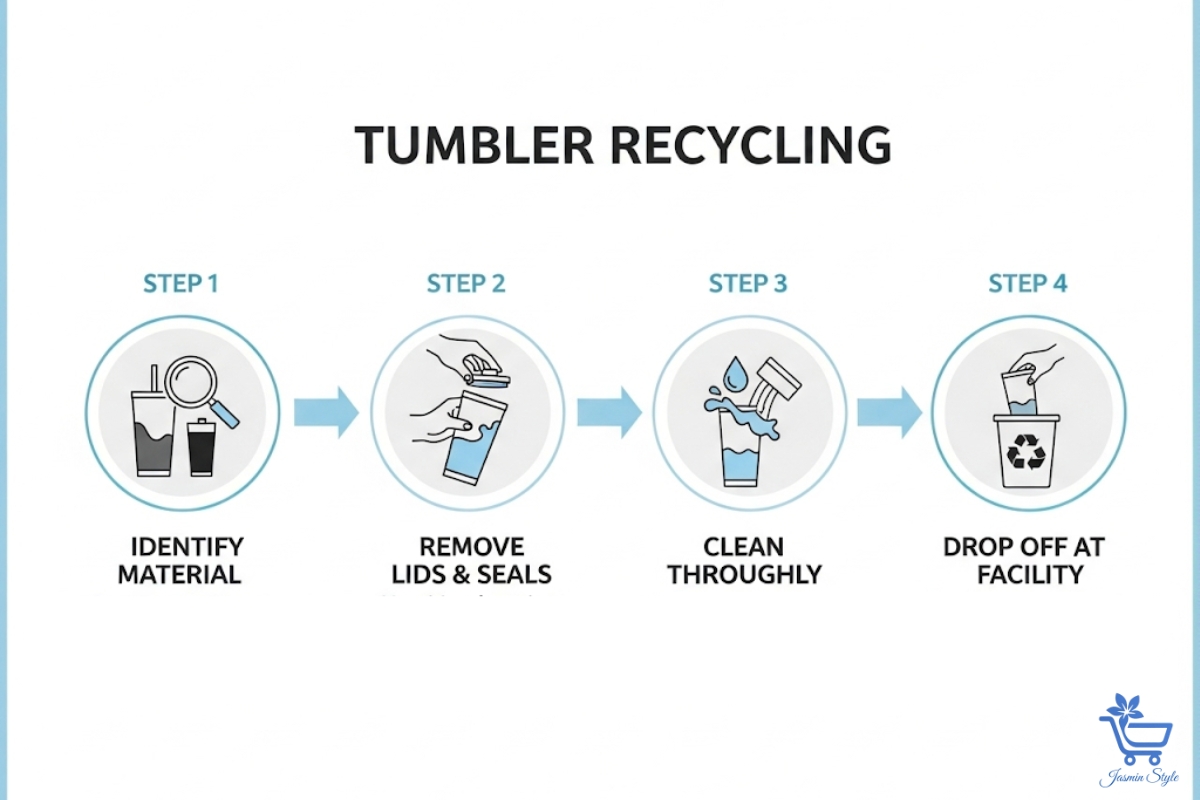
Here are some clear, simple steps to help you recycle your tumbler properly:
1. Check the bottom for recycling symbols — This gives you a starting point for identifying material type.
2. Remove all attachments — Lids, rubber gaskets, silicone wraps, and metal straws need to be separated.
3. Clean the tumbler — Rinse thoroughly to remove residue.
4. Consult your local recycling guide — Not all municipalities accept the same materials.
5. For stainless steel tumblers — Take them to a dedicated scrap metal recycler or local collection point.
By following these steps, you can improve your chances of successful recycling and reduce contamination in your local system.
Alternative Ways to Reuse or Repurpose Tumblers
If your tumbler can’t be recycled, don’t toss it just yet. There are plenty of creative ways to give it a second life:

– Desk organizer: Store pens, scissors, or makeup brushes.
– Mini plant pot: Add drainage rocks and soil for a low-maintenance succulent.
– Water scoop: Great for the garden or pet bowls.
– Donate: If it’s in good condition, consider giving it to a shelter, school, or thrift store.
– Upcycle: Crafty types can paint, decorate, or transform it into art or storage.
Looking for ways to prep for an eco-friendly new school year? Here are the Top 5 Back-to-School Hoodies for Teens in 2025 — a fun way to pair sustainability with personal style.
Tips for Choosing a More Sustainable Tumbler

Looking to make better buying choices next time? Here are a few eco-friendly tumbler disposal and purchase tips:
– Choose single-material designs — Easier to recycle and longer-lasting.
– Opt for stainless steel or glass — These tend to be the most sustainable over time.
– Avoid cheap plastics — Especially those with no recycling symbol.
– Buy from eco-conscious brands — Look for those that offer take-back programs or recycled packaging.
Speaking of smart shopping, we recently rounded up the top K-Pop Demon Hunters merch fans are loving — it’s proof that sustainability and style can go hand in hand.
Conclusion: Think Before You Toss
So, can tumblers be recycled? Yes — but with conditions. By understanding the material, checking local guidelines, and taking a few extra steps, you can keep more items out of landfills and contribute to a cleaner planet.
Every small act — whether it’s recycling a stainless steel tumbler or repurposing an old plastic one — adds up. So next time you’re cleaning out your cabinet, don’t just throw it away. Think, rinse, repurpose, or recycle — and give your tumbler one last job before it says goodbye.
Curious about how other everyday items hold up over time? You might enjoy reading: Do Hoodies Stretch Over Time?





